BETANZOS, BOLIVIA — Vancouver-based junior New Pacific Metals (TSXV: NUAG; US-OTC: NUPMF) could be on the verge of a major silver discovery in south-central Bolivia, after clinching a pioneering deal with Bolivian authorities.
For 500 years, since the discovery of the giant Cerro Rico silver deposit at Potosi, Bolivia has tantalized visitors with its mineral wealth. But the country’s unstable politics, difficult geography and soaring altitudes have put off many.
New Pacific Metals hopes to change attitudes with its promising Silver Sand silver-polymetallic project, located near Betanzos, 54 km northeast of Potosi by mostly paved road.
In one telling of the story, New Pacific Metals CEO Rui Feng (who is also CEO and chairman of Silvercorp Metals (TSX: SVM; NYSE-AM: SVM) — China’s largest primary silver producer) was tipped off about the Silver Sand property when a report landed on his in-tray from a former classmate, now at China’s prestigious Academy of Geosciences.
“When we read it, it looked too good to be true,” says Alex Zhang, vice-president of exploration at New Pacific Metals. But when two other potential projects failed to live up to expectations, the geologist flew down to Bolivia in early 2017 to see the site for himself.
Zhang says he was astounded at the size and grade of the mineralization. One of the first holes drilled at the site intercepted 187 metres of mineralized rock, with an average grade of 162 grams silver per tonne.
Within months of the visit, New Pacific Metals arranged to buy Silver Sand from its Chinese owner for $40 million, closing the deal in July 2017.
New Pacific Metals and Silver Sand’s previous Chinese owner were far from the first to spot the area’s potential.
The rugged landscape at the site is dotted with tunnels, mine dumps and abandoned ruins, including a church and a smelter — evidence the rocks had been mined since colonial times. Mining activities at the site could even predate Cerro Rico.
Today, artisanal miners still mine several areas, pushing mine carts full of broken rocks out of narrow tunnels.
The previous owners carried out limited exploration work from 2012 to 2015, and subsequent work by New Pacific Metals has only confirmed the size of the find.
A 55,000-metre diamond drill campaign finished late last year has confirmed the project’s potential with all but five out of the 195 holes drilled in the original 5 sq. km claim hitting mineralization.

Fresh core from the Silver Sand project in Bolivia. Photo by Tom Azzopardi.
The project’s geology consists largely of Cretaceous-aged red sandstone, which has been bleached white and yellow through contact with highly mineralized material.
Examining core at the company’s storage site in the small town of Betanzos, Zhang tells visitors that the grades depend on the density of the fractures in the brittle host rock. In some parts, where the sandstone has fragmented into breccia, the grades can reach as high as 3,000 grams silver per tonne in limited intervals.
But pushing its way through the sandstone, the mineralizing fluids ran into a layer of impermeable mudstone and siltstone that covers most of the district, which forced the alteration outwards.
Seeing the area’s geology, New Pacific Metals advisor Peter Megaw — who helped discover Fresnillo and MAG Silver’s new Juanicipio silver-gold mine in Mexico — urged the team at New Pacific to radically expand its land package at Silver Sand to see just how far the mineralization had spread.
It was advice they took.
In January, after months of careful negotiation with the authorities in La Paz, the company signed a ground-breaking agreement with Bolivia’s state mining company Comibol, allowing the junior to explore and eventually mine an area covering 57 sq. km around the Silver Sand claim.
The deal is part of a push by the Bolivian government to attract foreign investment to the mining industry (see “Bolivian gov’t seeks new deal with miners, says Minister Navarro”).
New Pacific Metals’ 45-year concession at Silver Sand, known as a “Mining Production Contract,” requires no upfront payment, but the company will have to fulfill investment commitments, including US$6 million in exploration costs during the first five years.
In addition, Comibol will get a 4% royalty on all minerals produced from the concession area.
News of the deal has helped New Pacific Metals’ market capitalization rise to $300 million, or a tenfold increase in its share price in the last three years, even though more than half its 133 million outstanding shares are held by three investors — Silvercorp, Ross Beaty-led Pan American Silver (TSX: PAAS; NASDAQ: PAAS), and Feng himself.

Llamas on parade at New Pacific Metals’ Silver Sand silver-polymetallic property in Bolivia. Photo by Tom Azzopardi.
The project’s success will depend to a great extent on fostering good relations with nearby communities.
After the Bolivian wet season, which runs from December to March, the steep slopes of the concession area are lush pastures for llamas bred by local people for their meat and wool.
New Pacific Metals has been careful to understand the concerns and needs of their neighbours, and have hired staff who speak the local Quechua language.
This year, the team plans to move its camp from Betanzos to a site in the same district where the project is located to ensure locals benefit from the company’s presence, New Pacific Metals president Gordon Neal says.
With the worst of the rains behind it, the company has now embarked on a second 55,000-metre drill campaign. Roughly 10,000 metres will be infill drilling in the core area, which Zhang expects will help the company publish the first-ever resource estimate for Silver Sand by year-end.
The team is already thinking through how it could develop an open-pit mine along the brow of the San Cristobal hill near the centre of the original claim. The strip ratio could be as low as 1 to 1, keeping down capital costs.
But the drilling will target nine new targets, most of which are located in the areas covered by the new Comibol agreement.
These are either areas with similar geology to the original Silver Sand claim or with evidence of colonial-era mining activity, such as high-grade mineral dumps.
As the project advances, New Pacific Metals has expanded its team, adding project manager David Turner to oversee exploration work, and vice-president of corporate development Robert Cinits, who will examine opportunities.
There is no shortage of potential exploration plays in the country, some with similar geologies to Silver Sand.
But New Pacific’s success has attracted more companies to look again at Bolivia, and Comibol is in talks with several over deals that could be signed in the coming months.
As well as changing attitude among foreign investors, the Silver Sand project is encouraging Bolivian geologists to re-examine the rocks around them. A presenter of a paper at a recent geological conference highlighted the potential of Bolivia’s Cretaceous-aged sandstone for silver mineralization based largely on New Pacific’s drill results.

Tom Azzopardi
— Based in Santiago, Chile, Tom Azzopardi is a freelance business journalist specializing in the resource sector.

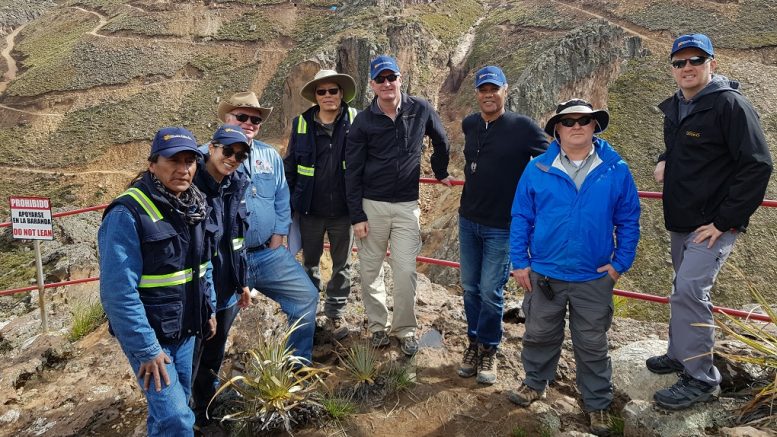
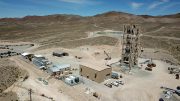
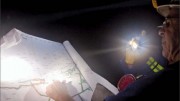
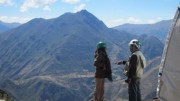
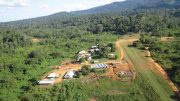
A great project and opportunity for New Pacific Metals Corp.